
The Core Ultra 9 and 7 CPUs are all essentially the same chip: All have the same 12MB of cache, eight of Intel's Xe cores for the integrated Arc 140V GPU, and six cores (or "neural compute engines") for the NPU. The Core Ultra 7 chips use marginally lower clock speeds for the CPU, GPU, and NPU, but overall performance should be very similar.
The Core Ultra 5 chips still have the same number of CPU cores, but with 8MB of cache instead of 12MB. The Arc 130V GPU has seven Xe cores instead of eight, and the NPU has five cores instead of six, though Intel says it still hits the 40 trillion operations per second (TOPS) baseline necessary to qualify for Microsoft's Copilot+ label.
All of the chips except for the Core Ultra 9 default to 17 W base power, with a minimum of 8 W (if the manufacturer configures it that way) and a maximum Turbo Boost power of 37 W. It's slightly different for the Core Ultra 9, which has a default base power of 30 W and a minimum of 17 W.
All of the Core Ultra 200V CPUs include four P-cores based on the Lion Cove architecture and four E-cores based on the Skymont architecture. This is a step down from the core counts offered for both Meteor Lake and some earlier 13th-generation Core CPUs (the fastest Meteor Lake chops had six P-cores and eight E-cores), and many of Intel's charts indicate that Lunar Lake's peak multicore performance is lower overall. Lunar Lake mainly beats Meteor Lake's performance when power is constrained—Intel's charts show Lunar Lake beating a Meteor Lake CPU by 10 percent when operating at a 17 W power limit, for example.
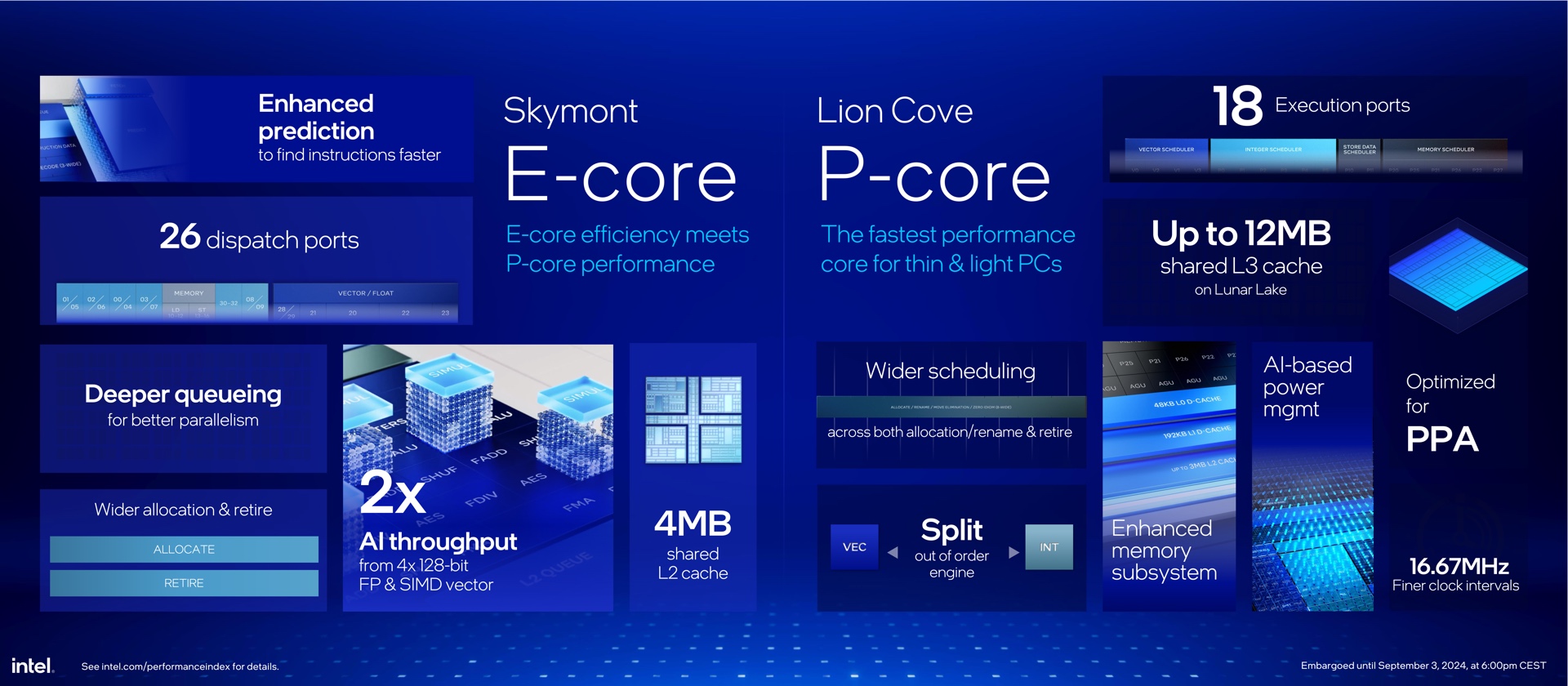 Some high-level details on Intel's new E- and P-core architectures.Intel
Some high-level details on Intel's new E- and P-core architectures.Intel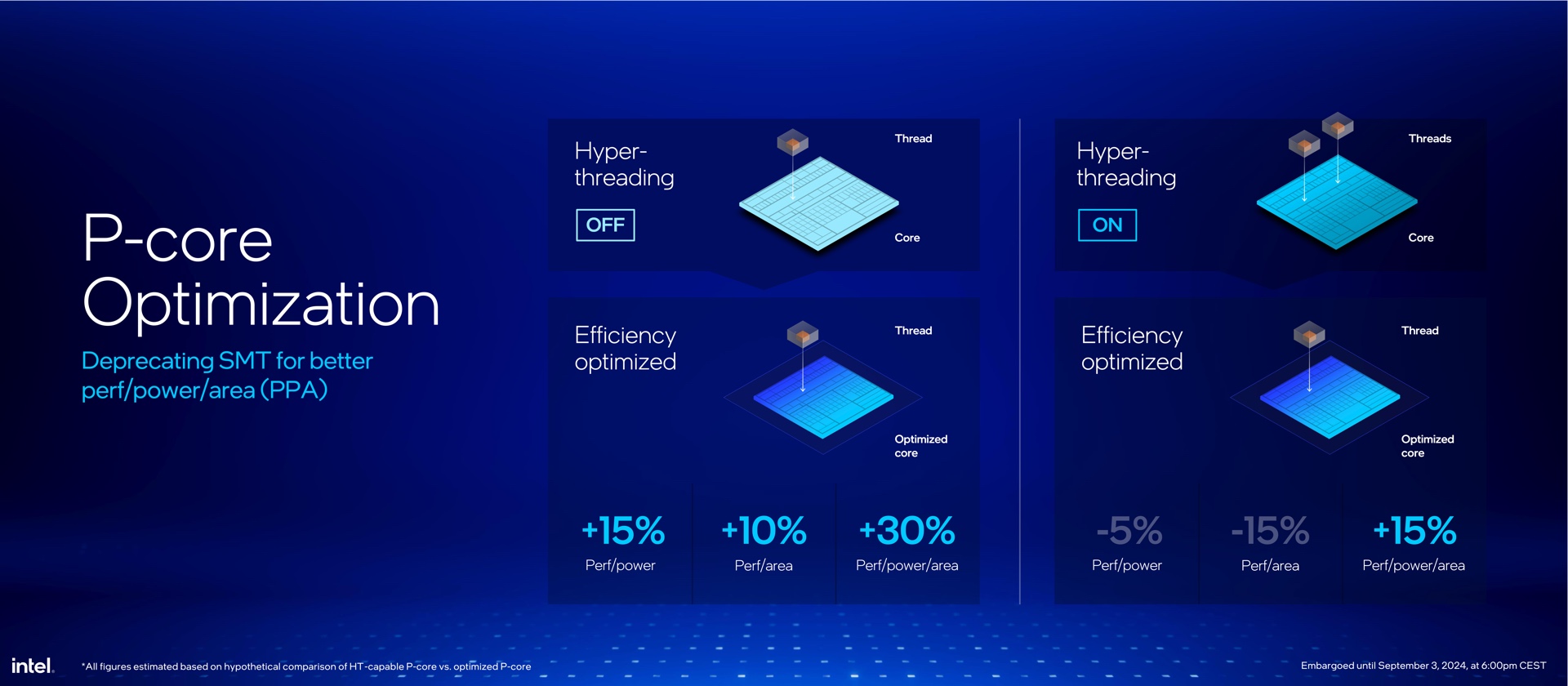 Intel has removed Hyper-threading support from Lunar Lake, claiming that there are better ways to spend that silicon.Intel
Intel has removed Hyper-threading support from Lunar Lake, claiming that there are better ways to spend that silicon.Intel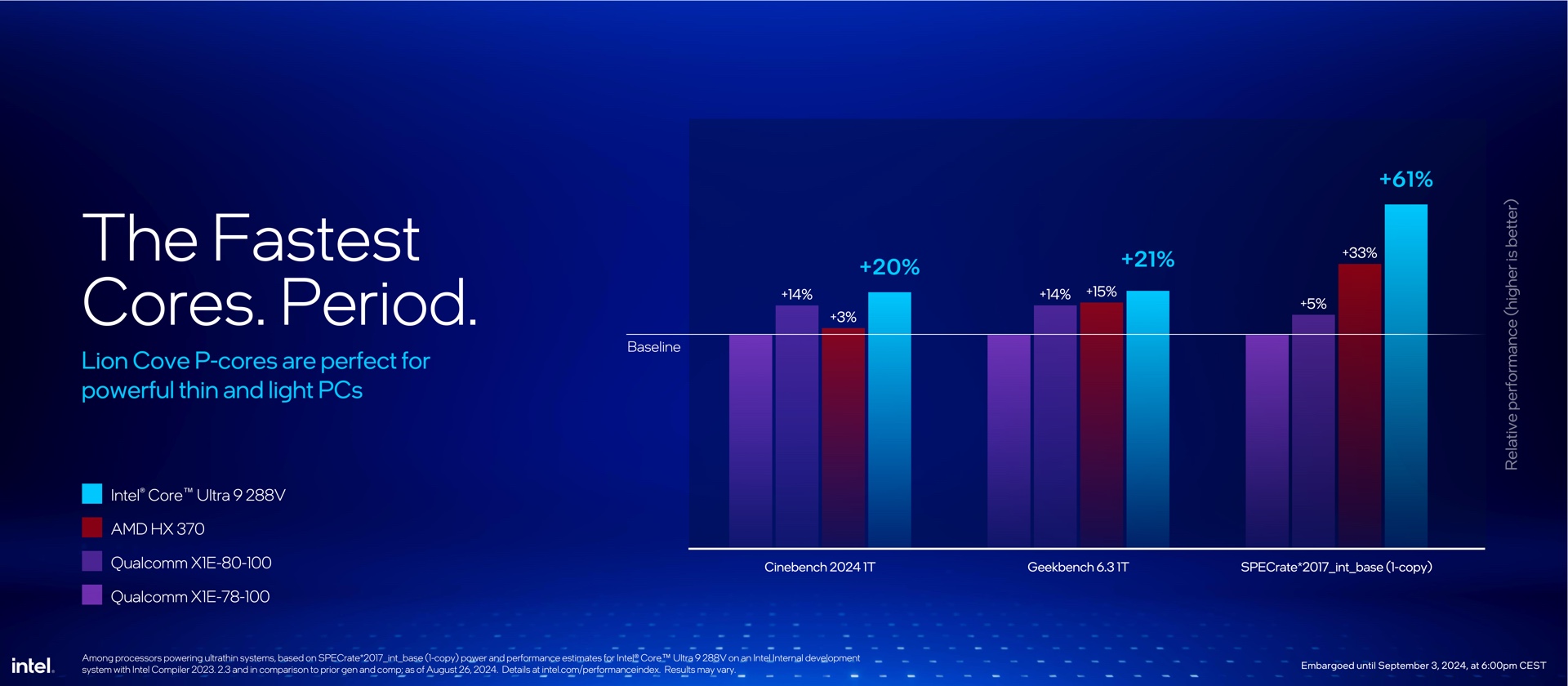 Intel says its single-core performance can beat both Qualcomm and AMD.Intel
Intel says its single-core performance can beat both Qualcomm and AMD.Intel The multicore performance picture is more complicated, because Lunar Lake has so many fewer cores than Meteor Lake (or 13th-generation Core) CPUs did. Lunar Lake comes out ahead at lower power levels, but Meteor Lake can run faster when power limits aren't an issue.Intel
The multicore performance picture is more complicated, because Lunar Lake has so many fewer cores than Meteor Lake (or 13th-generation Core) CPUs did. Lunar Lake comes out ahead at lower power levels, but Meteor Lake can run faster when power limits aren't an issue.Intel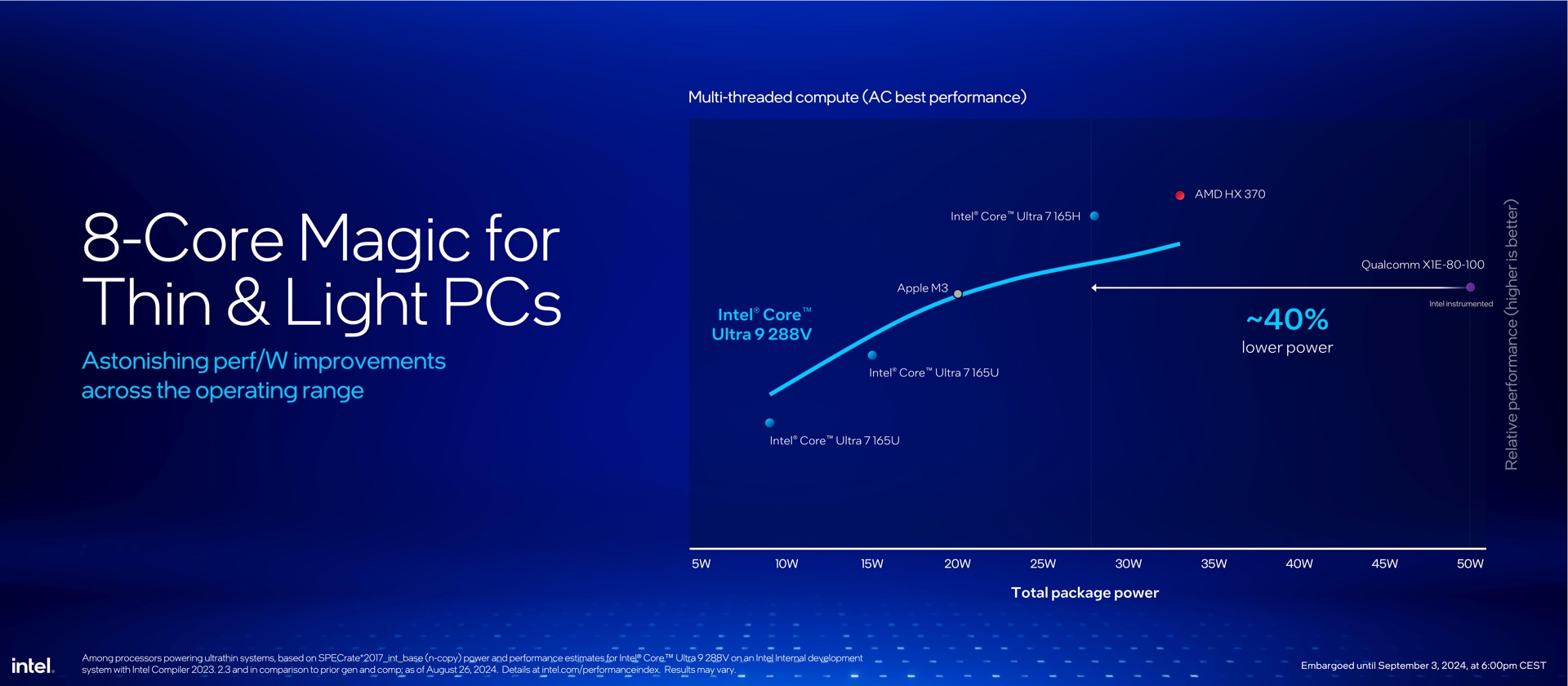 This kind of chart is about as close as Intel gets to admitting that Lunar Lake will be slower than Meteor Lake or AMD's Ryzen AI HX chips, though it's better that people will care more about its power efficiency. At roughly 20 W, Intel is claiming performance similar to Apple's M3.Intel
This kind of chart is about as close as Intel gets to admitting that Lunar Lake will be slower than Meteor Lake or AMD's Ryzen AI HX chips, though it's better that people will care more about its power efficiency. At roughly 20 W, Intel is claiming performance similar to Apple's M3.Intel
Intel's charts were light on direct generation-over-generation performance comparisons using actual laptops, but the upshot is that this is Intel's second CPU generation in a row where peak CPU performance will stay similar to or even regress a little compared to the previous generation. This is, arguably, a welcome course correction since 12th-gen Core CPUs seemed to prioritize multicore performance gains at the expense of battery life. But it's a change from just a few years ago, when you could generally expect each new chip generation to be an across-the-board improvement from its predecessor.
The Arc GPU is a more straightforward upgrade. Intel says that its fully enabled Arc 140v GPU, the first of Intel's graphics products to use its next-generation Battlemage architecture, will be 31 percent faster on average than the Arc GPU in Meteor Lake chips; 68 percent faster than the Adreno GPU in Qualcomm's Snapdragon X Elite chips; and 16 percent faster than the Radeon 890M in the Ryzen AI 9 HX 370. Intel also noted that about half the games it used for testing wouldn't run on the Snapdragon X Elite.
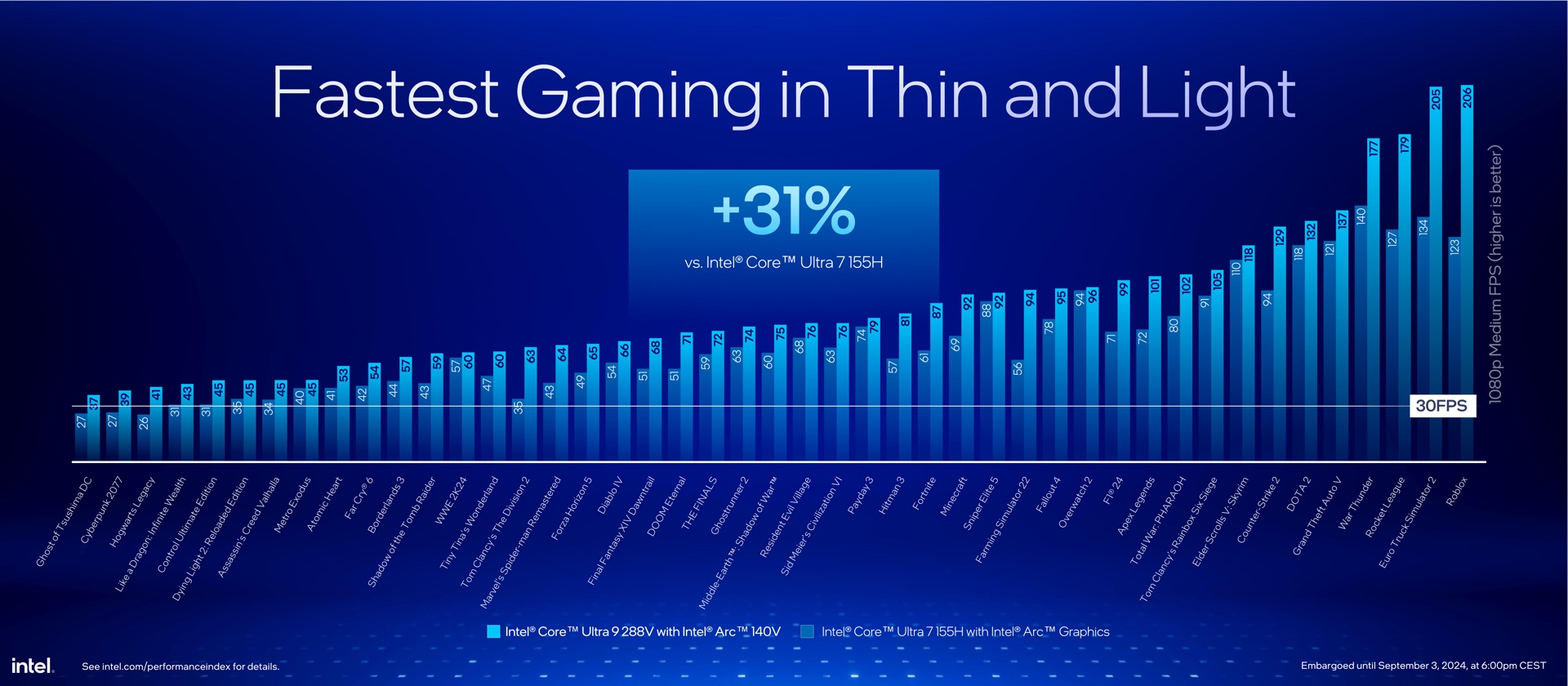 Intel is claiming roughly a 31 percent performance improvement over Meteor Lake.Intel
Intel is claiming roughly a 31 percent performance improvement over Meteor Lake.Intel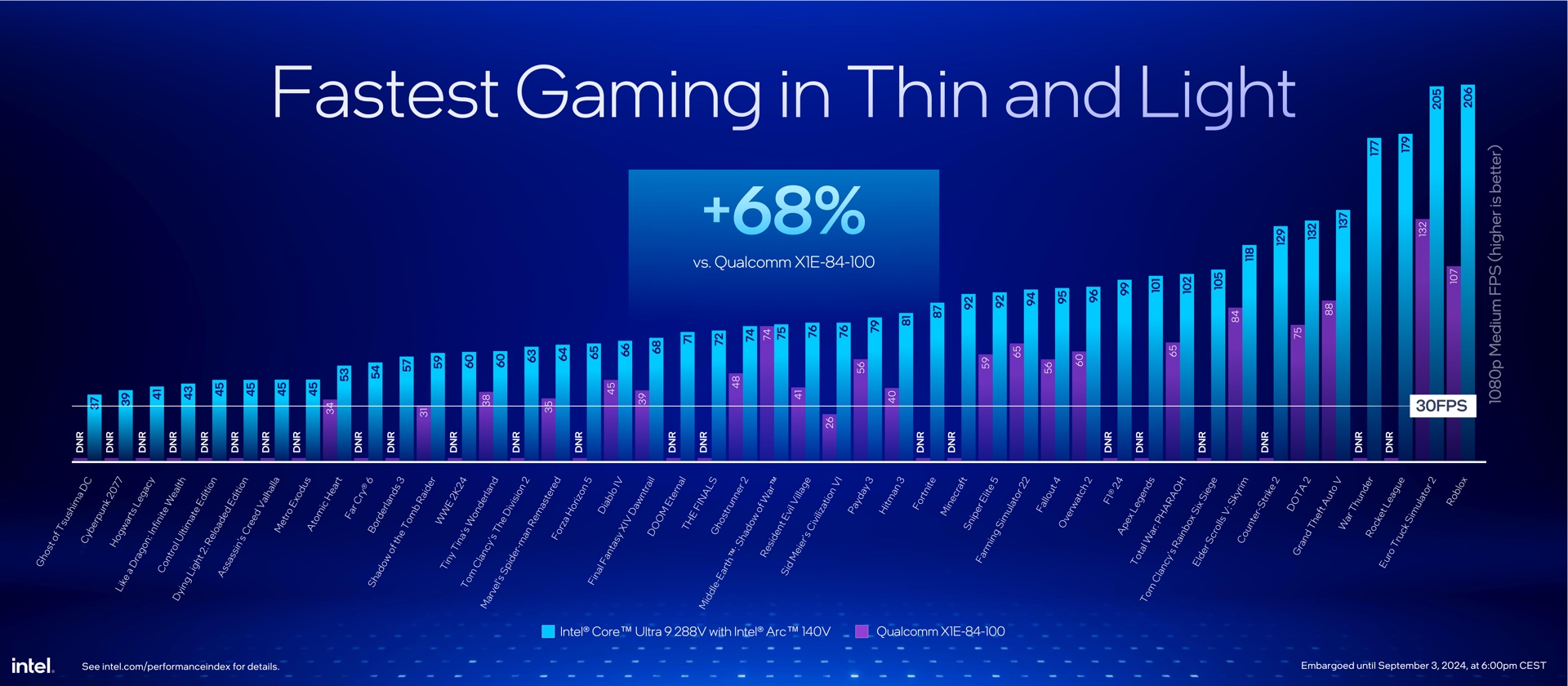 Comparing Arc's performance to Qualcomm's here is made more complicated by x86-to-Arm overhead and games that just won't run on Arm PCs.Intel
Comparing Arc's performance to Qualcomm's here is made more complicated by x86-to-Arm overhead and games that just won't run on Arm PCs.Intel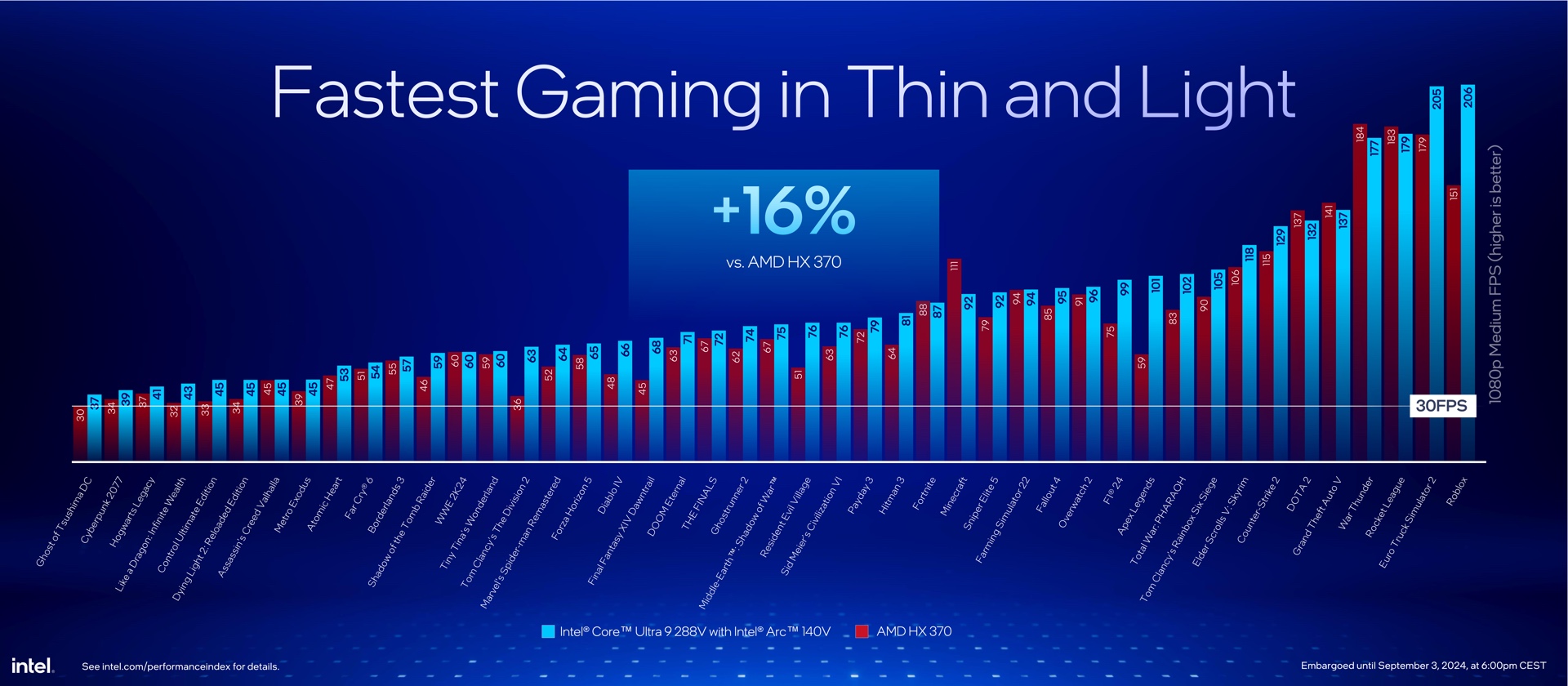 Intel also says it's faster than AMD's best integrated graphics, though there's more variability here based on the games you're running.Intel
Intel also says it's faster than AMD's best integrated graphics, though there's more variability here based on the games you're running.Intel
Intel is launching the Lunar Lake chips several months ahead of its typical schedule—it usually announces its first batch of new laptop chips in December, and the PC companies mostly refresh their systems at CES in January. But that timeline would put Intel at risk of being the only major CPU company whose PCs didn't qualify for the Copilot+ label during the fall and holiday shopping seasons.
Copilot+ compatibility doesn't actually get you all that much right now, and the features still aren't actually available on x86 PCs as of this writing—the features that do exist are currently exclusive to Qualcomm's Snapdragon X Elite and Plus CPUs, though they ought to be enabled on Intel and AMD PCs in an update to Windows 11 24H2 later this year. But it's a label that Microsoft is putting a decent marketing budget behind, and Intel needs all the help it can get right now; the company lost $1.6 billion last quarter, prompting a huge round of layoffs (which follows other rounds of layoffs that have happened within the last year). The company also said that it had previously undisclosed manufacturing issues with Meteor Lake, making it more difficult to meet demand.


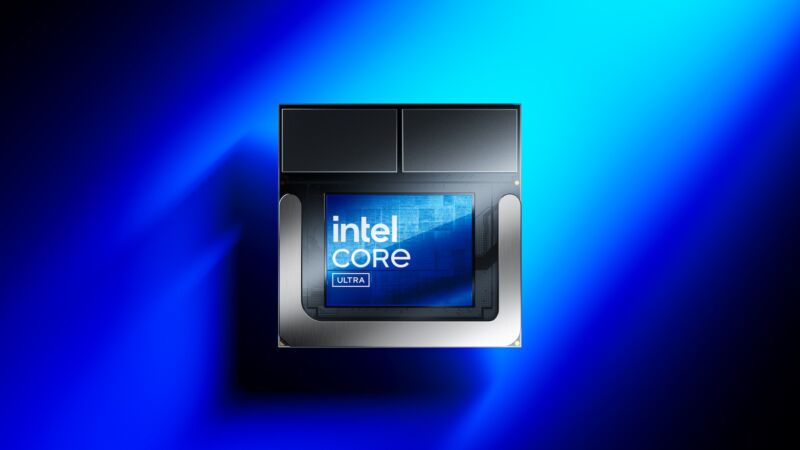

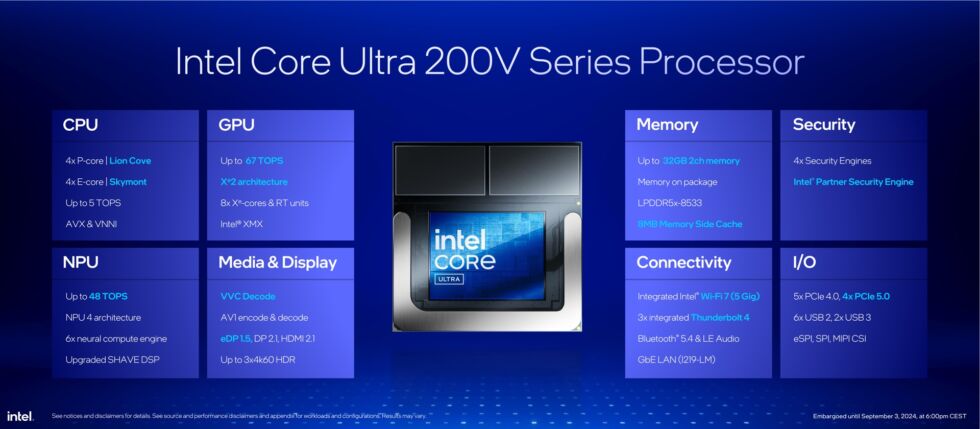

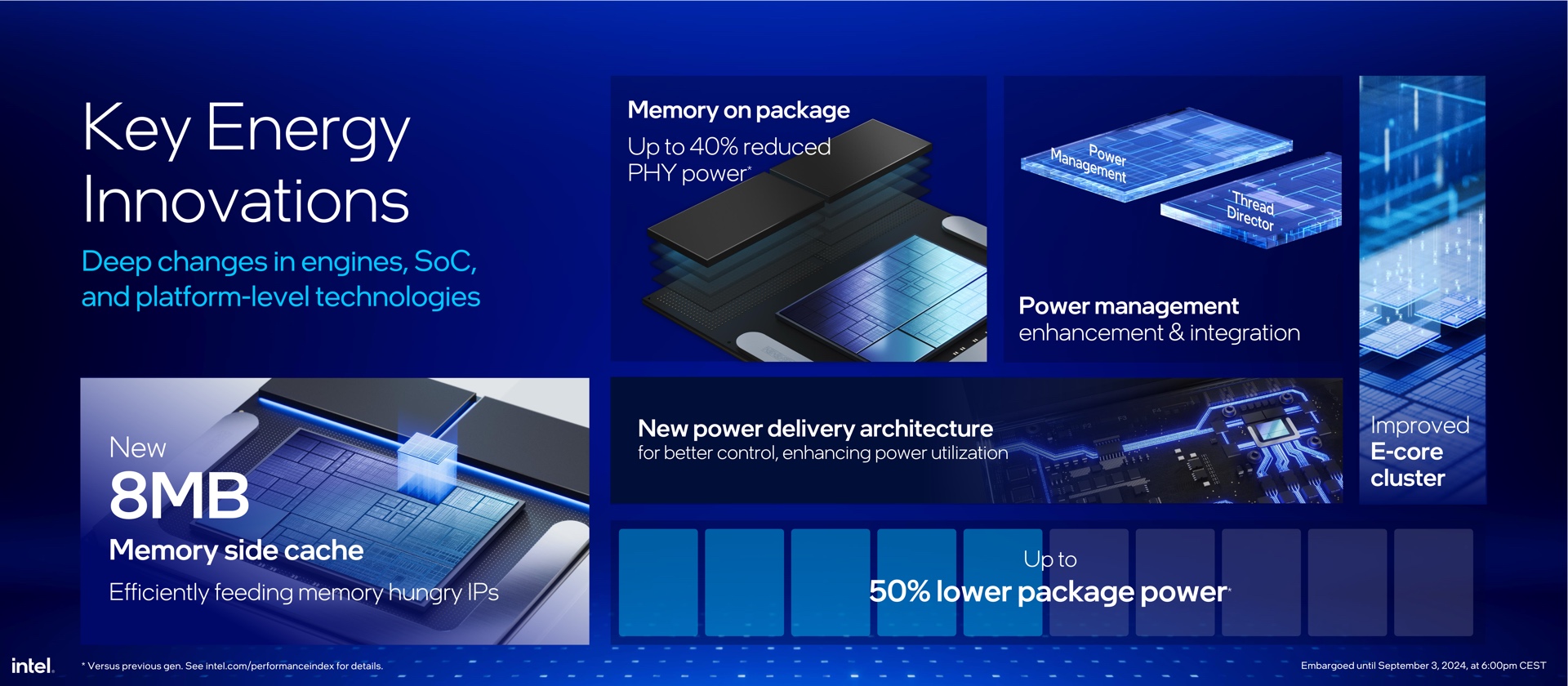
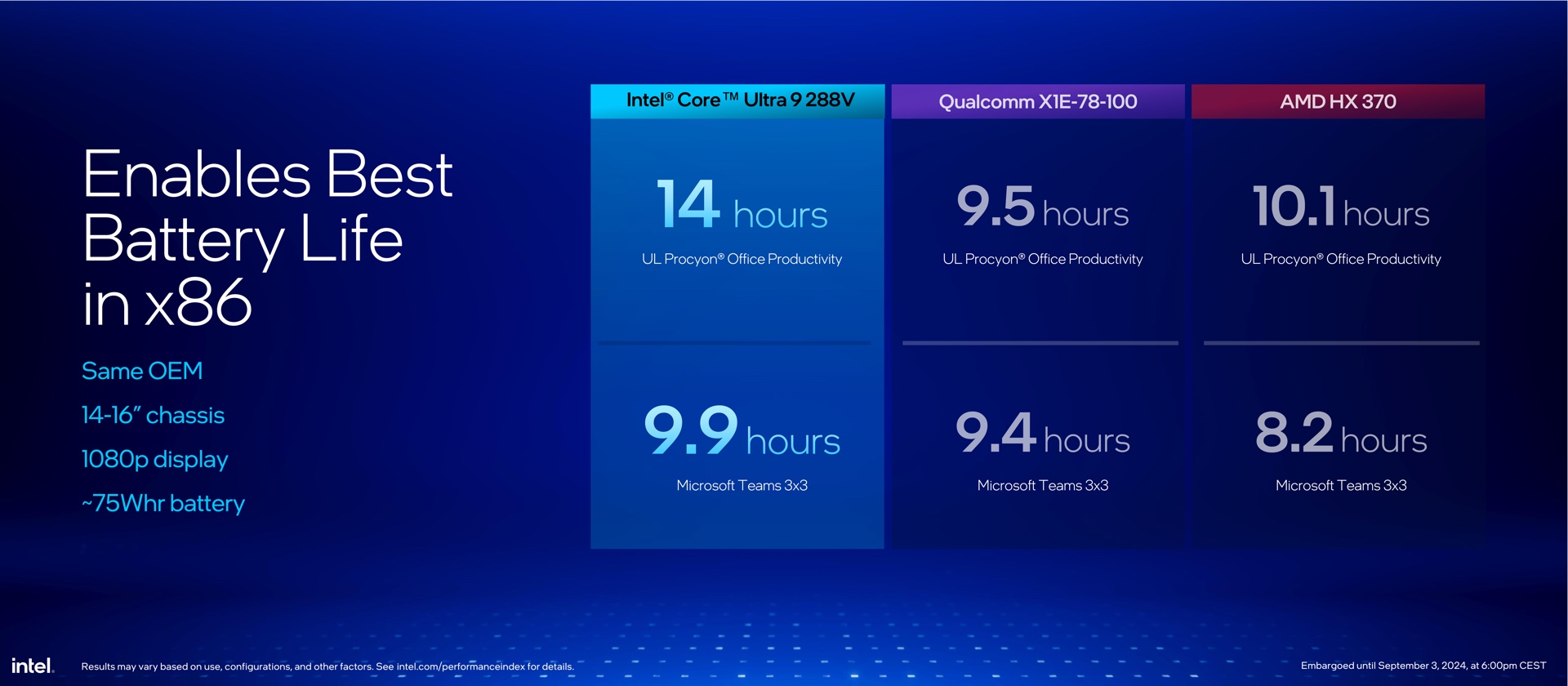







Comments